
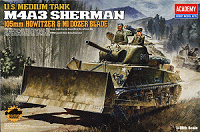
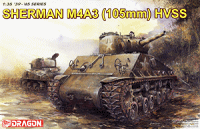
M4A3 Sherman
105mm HVSS
1:35th Scale
Comparison review by Terry Ashley
Part 2
HVSS Suspension



The Academy bogies are those first included in their 1997 kit of the M-51 Super Sherman (kit #1373) and while they build into respectable bogie units their age shows compared to the more recent AFV Club and Dragon sets.
Each Academy bogie unit has the two main arm sections and top shock absorber in one simplified part which doesn’t allow for any movement and added to this is the two part volute spring units and separate oil reservoir which is the right size with the raised rib and separate front bracket.
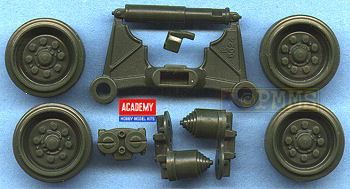
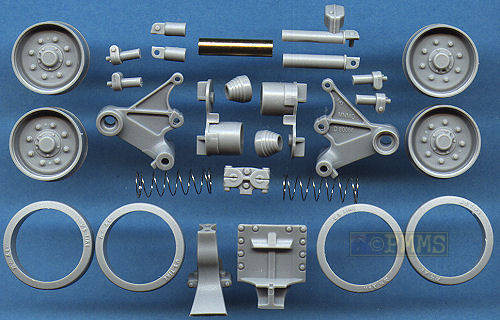
The Dragon bogies are designed to be workable after assembly but this is a bit gimmicky as they don’t really work realistically with the spring units distorting if you compress the wheels and it would be best to assembly them as fixed units. It is possible to easily fix them in an articulated state to use in a diorama over rough ground if need be due to the working nature so this is helpful.
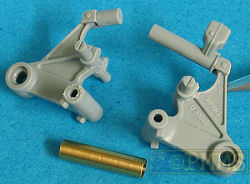
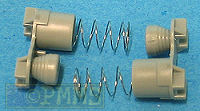
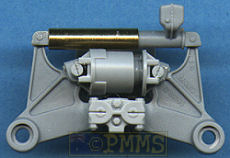
The AFV Club bogies are also designed to be workable but these just swing from side to side and don’t actually compress as do the real units and like the Dragon units are best assembled as fixed units.
Due to the many parts in the Dragon units care is needed when assembling the bogies, especially the volute spring units which trap the two fine springs between the end sections, just don’t let go of the springs while compressing during assembly as they may very well join the Space Station crew in orbit.
The two main bogie swing arm brackets on the Dragon kit have fine casting numbers included on the one side which means when assembled one faces the outside and the other the inside, this is actually correct and most photos show the casting numbers on the outside at the same end as the oil reservoir on the upper shock absorber piston.

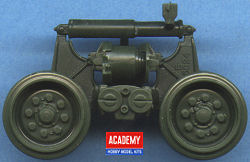
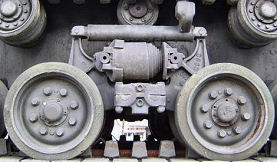
The Dragon road wheels have separate rubber sections with fine embossing on the side walls and have good definition at the join when assembled but the detail on road wheel hub lacks the grease nipple (the small housing is included but not the nipple) and there is a pin mark indentation on the central hub, plus the wheel bolts are a little undersized.
The Academy road wheels are conventional with the rubber section included as well as the hub bolts and greased nipple location but no actual nipple but the hub bolts are a little oversized with the AFV Club wheels having better detailed and sized hub bolts and also included the hub grease nipple. All three wheels lack the subtle rim contours but this would be almost impossible to include with injection moulding.
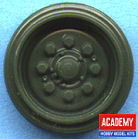
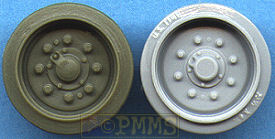
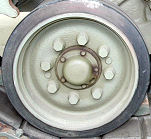
All three units included the oil reservoir on the upper shock absorber with the weld seam included but the Dragon items looks slightly oversized when comparing the photos but this won’t be very noticeable on the assembled bogies with the lower bolts on the bogie attachment plate being better defined on the Dragon units.
The Dragon idler wheels again have separate rubber sections for good definition but the rim bolts lack detail and there is again a pin mark indention on the central hub with the Academy idlers having again oversized hub bolts and the central hub lacks any real definition with the AFV Club idlers again being better detailed of the three.
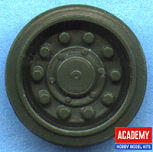
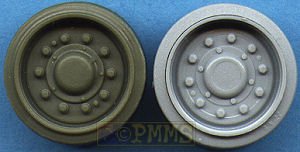
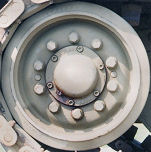
With the drive sprockets both the Academy and Dragon kits provide a choice of two types, the fancy smooth and solid plate disks but the Academy discs only have the bolt detail on the outside and some hefty pin marks on the inside while the Dragon sprockets have inner bolt detail included.
The Academy discs attach to inner hubs that include the twin guide discs of the type introduced with the M26 and most subsequent U.S. tanks and while this is applicable for a Korean vehicle if you wanted to backdate the kit to late WWII these discs would have to be removed. It is a simple matter of cutting these discs away after assembling the sprockets to represent the smooth wartime sprocket hubs. There is also another issue in that the Academy sprockets are slightly wider than both the AFV Club and Dragon sprockets but probably won’t be noticeable on the final kit.
The Dragon sprockets are designed to attach the tooth discs to the separate inner sprocket hub with very small locating pins to ensure the sprocket teeth line up. The inner hub bolts are a little undersized due to the moulding constraints as the inner disk is inside the central hub.
The AFV Club sprockets only have the fancy smooth sprocket with a separate inner sprocket hub also having very small locating pins to ensure the sprocket teeth line up but the inner bolted hub is a separate part allowing the hub bolts to be better depicted.
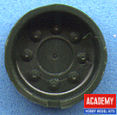
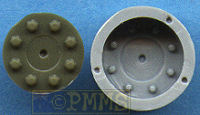
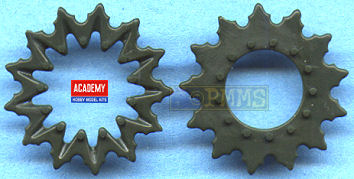
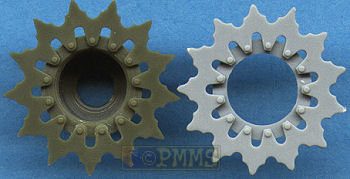
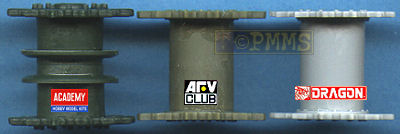
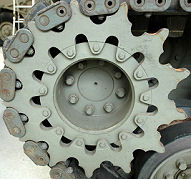
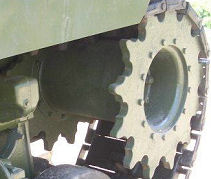
All kits provide the final drive covers as separate parts but the Dragon covers are undersized but have the correct ribbing on the drive axle as do the AFV Club axles which can be seen between the sprocket and final drive after assembly but the Academy kit has simple pins to attach the sprocket that lack any detail.
The return rollers are a bit of a mish mash as all have minor distortions on the central hub of the large rollers but the Dragon rollers lack the grease nipple which is on the AFV Club roller while the Academy roller has oversized hub bolts. The smaller return rollers are similar on all but the central hub is more pronounced on the Academy wheel but are passible matches for the actual unit.

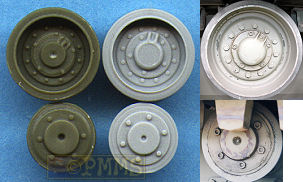
The Dragon bogie hull mounting brackets are better contoured and detailed than the other two brackets but this detail is mostly hidden under the model after assemble but it’s nice to know the detail is there.
So overall the AFV Club suspension units have better defined bolt heads and hub detail in the road wheels, idlers and drive sprockets while the Dragon units have better hull mounting brackets and detail on the central bogie attachment plate and so both have pluses and minuses and will build into nice representations of the HVSS suspension way ahead of previous efforts. But the Academy units as mentioned show their age compared to the newer bogies and while look okay on their own don’t quite measure up compared to the newer kits.
Tracks:
The T80 Steel Chevron tracks are provided as full length vinyl track in both
kits with the Academy kit have conventional vinyl that has to have the ends
heat welded together while the Dragon kit has the tracks in the newer DS
vinyl that glues together with normal plastic cement. Detail on the Academy tracks is passible at best with nicely defined link detail but there is a
fair bit of thin film around the end connectors which is all but impossible
to remove with the thin vinyl material and the square inner guide teeth while
moulded correctly between each link are solid and lack any sort of detail
at all.
A feature of the Dragon tracks is that the guide teeth are provided separate in normal plastic and are moulded very thin while being hollow and including the hole in the flat “top” of the tooth. Each tooth has two large sprue attachment points that will require care in removing and cleanup due to the small size but add considerable detail to the final tracks and are clearly the better of the two tracks.
The links as you would imagine fit neatly around the kit drive sprockets on both kits but the softer Dragon tracks sit better around the sprockets than the stiffer vinyl of the Academy tracks.
Academy Tracks
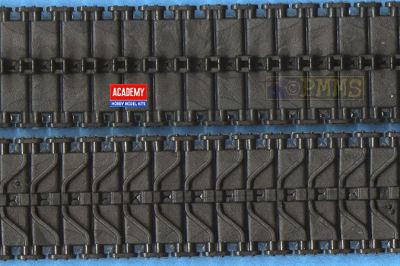
Dragon tracks
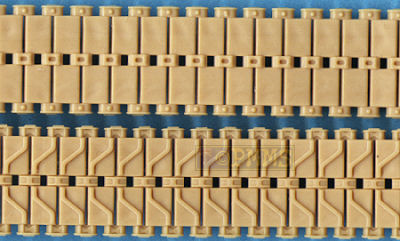
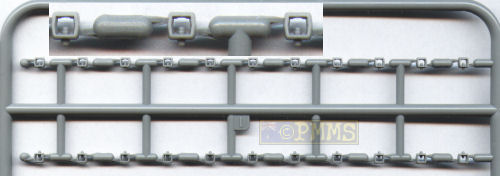
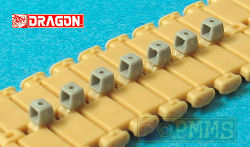
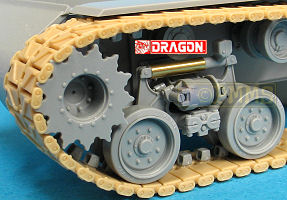
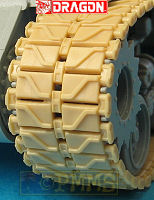
Review: Introduction
Part 1: Hull details
Part 2: Suspension details (this Page)
Part 3: Turret details
Page created December 3, 2006